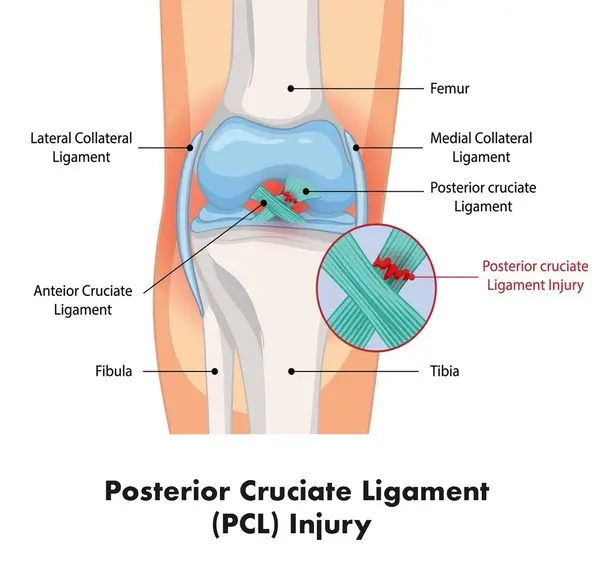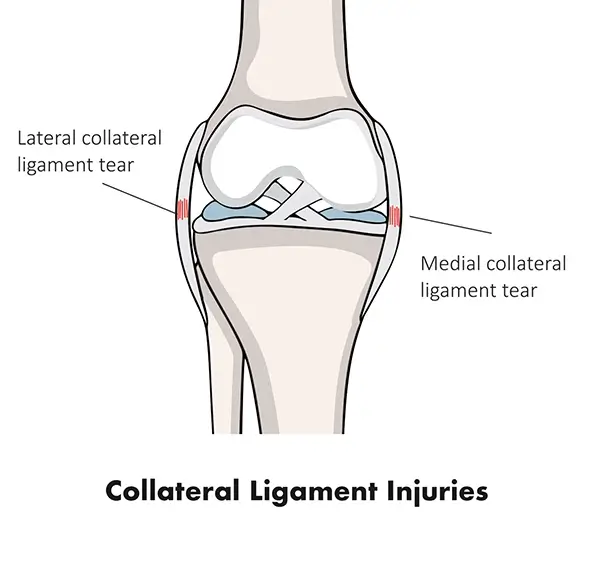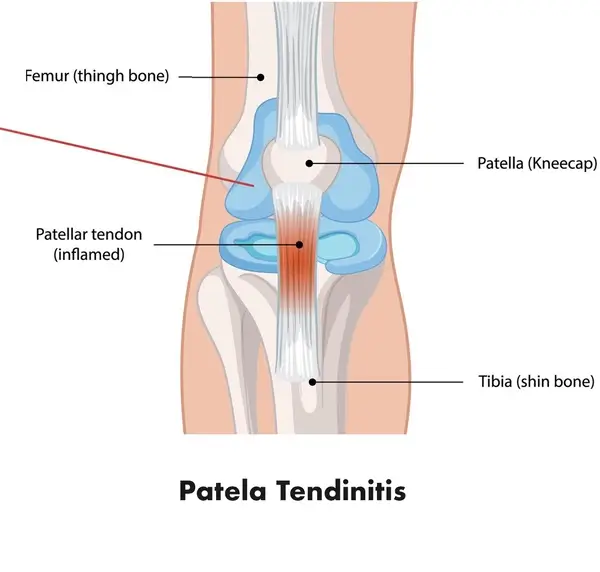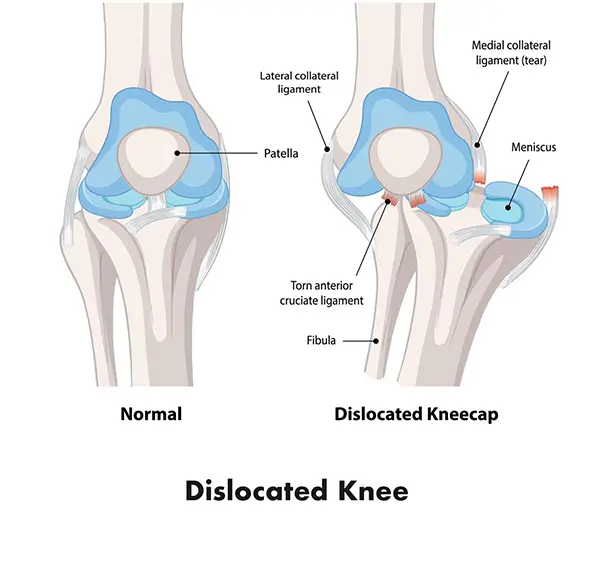Common Knee Injuries
The Knee
Common Knee Injuries
Key signs of a knee injury include pain and swelling. Additionally, the knee may catch or lock. Some injuries, like an ACL tear, can cause instability, making it feel as though your knee is giving way.
Anterior Cruciate Ligament (ACL) Injuries

What is the ACL?
The anterior cruciate ligament, commonly known as the ACL is a ligament in the knee, which prevents the tibia from rolling forward of the femur injury to the ACL. Results in knee instability, which can result in irreversible damage to the joint leading to arthritis.
The anterior cruciate ligament is frequently injured during sports activities, especially in athletes involved in cutting and pivoting sports like soccer, football, and basketball. Rapidly changing direction or landing improperly from a jump can result in an ACL tear.
Posterior Cruciate Ligament (PCL) Injuries

What is the PCL?
PCL Tear
The posterior cruciate ligament is often injured during high-impact activities or accidents. PCL injuries are more likely to occur in athletes participating in contact sports like football and rugby or in motor vehicle accidents. A PCL tear can result from a direct blow to the front of the knee or from hyperextending the knee.
Collateral Ligament Injuries

What are Collateral Ligaments?
Injuries to Collateral Ligaments
Injuries to the collateral ligaments are usually caused by a force that pushes the knee sideways, often resulting from contact injuries.
- MCL Injuries: These are commonly sports-related and usually caused by a direct blow to the outside of the knee.
- LCL Injuries: These occur less frequently and typically result from blows to the inside of the knee that push it outwards.
Many. collateral injuries occur along with damage to other knee structures, such as the articular cartilage, meniscus, or other ligaments.
Meniscal Tears

What is the Meniscus?
The meniscus is a C-shaped piece of cartilage located in the knee joint, acting as a cushion between the femur (thighbone) and tibia (shinbone). Each knee has two menisci, one on the inner side (medial meniscus) and one on the outer side (lateral meniscus). The menisci help to absorb shock and stabilize the knee.
Meniscal Tears
Tendon Tears

What is a Tendon?
A tendon is a tough, flexible band of fibrous tissue that connects muscles to bones, enabling movement and providing stability to joints.
Tendon Tears
The quadriceps and patellar (knee cap) tendons can be stretched and torn. Although anyone can injure these tendons, tears are more common among middle-aged individuals who engage in running or jumping sports. Common causes of knee tendon injuries include falls, direct force to the front of the knee, and landing awkwardly from a jump.
Patellar Tendon Tear
A patellar tendon tear occurs when the tendon connecting the kneecap to the shinbone gets torn. This injury can happen due to falls, direct hits to the front of the knee, or awkward landings from a jump. It often causes pain and makes it difficult to straighten the knee.
Quadriceps Tendon Tear
Fractures

Patellar Fracture
Distal Femur (Thighbone) Fractures of the Knee
Fractures of the Proximal Tibia (Shinbone)
Dislocation

What is a Dislocation?
Dislocations can be caused by structural abnormalities in the knee. In people with normal knee structure, dislocations are usually the result of high-intensity trauma, such as falls, motor vehicle accidents, or sports-related impacts.
